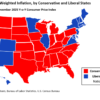Governor Little Signs Executive Order to Streamline State Government

Governor Brad Little signed Executive Order 2025-05, known as “The Idaho Act,” aimed at creating efficiencies in state government, reducing spending, and supporting public schools while implementing federal tax cuts for Idahoans.
The order directs state executive branch agencies — excluding K-12 public schools — to identify opportunities for consolidation, revert unfilled positions, reduce contract costs, streamline boards and commissions, cut general fund spending by 3 percent, and reduce travel expenditures for Fiscal Year 2026, which ends June 30, 2026.
Idaho has delivered historic tax relief over the past six years, including a 23 percent reduction in income taxes and billions in rebates and property tax relief. At the same time, the state has increased public school funding by $1 billion annually, raised teacher pay, and improved literacy outcomes, with General Fund appropriations for schools growing 63 percent since Governor Little took office.
Economic indicators cited by the state highlight Idaho’s strong performance: Fitch Ratings recently reaffirmed the state’s AAA credit rating, the civilian labor force and unemployment rates remain stable, layoffs are at a three-year low, and population growth ranks third nationally since 2020. Personal income is projected to rise 32 percent over the next five years, with wages expected to grow 15 percent.
Lawmakers praised the executive order for reinforcing Idaho’s focus on fiscal responsibility and prioritizing education. Senate President Pro Tempore Kelly Anthon described it as a measure to ensure taxpayers’ money is spent efficiently, while House Speaker Mike Moyle emphasized that Idaho’s approach “gives back what the people have earned.” JFAC co-chairs Senator Scott Grow and Representative Wendy Horman highlighted the state’s ability to balance growth with investments in public services.
The Idaho Act is intended to strengthen government efficiency, maintain fiscal discipline, and continue the state’s commitment to public education amid rapid population and economic growth.











